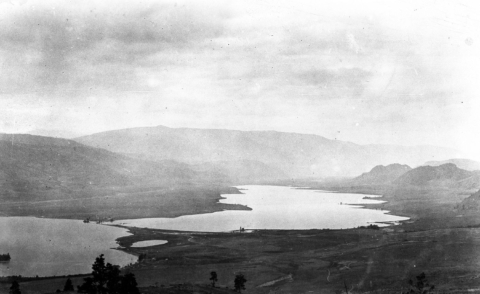by
Chris Weicht
and
Brian Wilson
A photograph in the Vernon Archives shows what appears to be a Curtiss Pusher type biplane flying over Penticton in 1917 and is reported to be Billy Stark’s aircraft.
Stark, a Vancouver shoe merchant, learned to fly in San Diego, at the Curtiss Aviation School where he received an Aero Club of America license on April 10, 1912. He was the first license pilot in B.C. and the second in Canada.
Stark immediately purchased a Curtiss Exhibition Type biplane and had it shipped to Vancouver where he began a series of exhibition flights. He was invited to the Okanagan town of Armstrong on July 1, 1912, and gave a performance to 4,000 people attending the annual fair.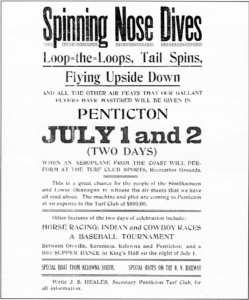
If the picture was of Stark flying over Penticton, it would have to be either in 1912 or or 1914. There is no proof to substantiate his presence in the city in 1917. Stark was in the Okanagan in July 1912, and was also giving exhibitions in B.C. in 1914. Another possibility was that the aircraft belonged to pilots Walter Edwards, who performed at Nelson September 24, 1912, or Weldon Cooke who also flew at Nelson in July 1914. Both these pilots flew Curtiss pusher type aircraft.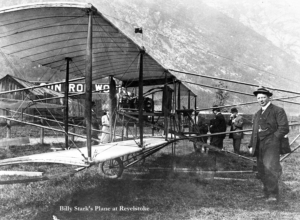
If there are doubts as to the identity and timing of Stark’s Curtiss pusher at Penticton, there are no doubts as to the next aviator at Penticton who arrived in time to thrill an audience at the Dominion Day celebrations on July 1, 1919. Lieutenant Ernest Hall and his mechanic Dudley Smith had flown from Vancouver with stops at Chilliwack and Princeton for fuel. They arrived at Penticton, Sunday, June 29. Hall was flying a Curtiss JN-4 Canuck belonging to the Vancouver Aerial Transportation Company. The Penticton Turf Club paid VATCO $800.00 for its sponsorship of the event.
The Vancouver branch of the Aerial League of Canada announced its plan to attempt the first crossing of the Rocky Mountains by air from Vancouver to Calgary. Newspapers in Vancouver, Lethbridge, and Calgary put up $950.00 in prize money for the successful completion of the flight under certain conditions. The league selected Captain E.C. Hoy, DFC, to make the flight, but Hall decided to try the flight himself. He set out in the attempt only to discover that one of the provisions for the prize was that the aircraft and its pilot both belonged to the aerial League.
Hall, therefore, was disqualified as his machine was owned by the Vancouver Aerial Transportation Company, which was a commercial venture. Hall was determined to continue the flight to Calgary by barnstorming along the way to help pay his expenses.
Hall arrived in Merritt on July 27 on a flight from Chilliwack. He gave an exhibition of acrobatics followed by “cash for rides” to the town’s people until August 1, when he flew to Kamloops,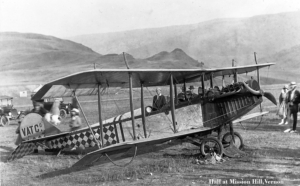 becoming the first aircraft to land at that city. He departed on Monday, August 4, for Vernon and arrived at Penticton August 6.
becoming the first aircraft to land at that city. He departed on Monday, August 4, for Vernon and arrived at Penticton August 6.
The Aerial League’s official contender was Captain Ernie Hoy who set out from Vancouver at 4:30 am on August 7, and flew nonstop to Vernon. When Lt. Hall, in Penticton, learned that Capt. Hoy had taken off from Vernon for Grand Forks, Hall left Penticton and flew to Midway to refuel. Later, Lt. Hall flew to Creston, where he unfortunately was forced to crash into a parked car on takeoff to avoid hitting spectators on the field, which ended his attempt to be first across the Rockies. Hoy was successful, however, and landed at Calgary’s Bowness Park at 8:55 pm. Lt. Ernie Hall, accompanied by his wife, arrived back in Penticton by car. They later left for the coast by train.
On Hall’s departure from Penticton, the Friday, August 15, 1919 edition of the Princeton Star stated that “it will probably be some time before Penticton is again visited by airplanes.” The Star editor was accurate in his prediction, as no further documentation of an aviation presence at Penticton was found for almost the entire 1920’s. With the formation of the Air board in 1919 to control the licensing of pilots, aircraft, and airfields, the practice of barnstorming out of fairgrounds in populated areas ceased. Penticton did not have a dedicated airfield.
In late September 1918, a new Alexander Eaglerock “Northern Light,” arrived in Penticton to barnstorm the city and offer ‘cash for rides’ and exhibition flights. Clyde Wann of the Yukon Airways and Exploration Company of Whitehorse had taken delivery of the aircraft at Denver, Colorado, and, after hiring pilot John Patterson, had flown to Vancouver where Canadian registration was assigned. The pair then proceeded to barnstorm their way to the Yukon, which took until December 1928. While at Penticton, Clyde Wann is quoted as saying that business was so brisk that in a one hour period they made 11 ten-minute flights.
Another documented aircraft arrival at Penticton occurred between the summer of 1929 and 1930 when Hump Madden and Joe Bertalino, who ran a flying school at Kamloops, visited the towns in the area on weekends to drum up business for their school. They barnstormed to eke out their meagre existence. The pair flew in Madden’s Fleet 2.
On July 7, 1932, Penticton hosted the BC Air Tour organized by the Aero Club of BC. As Penticton had no airfield, the air show took place in a meadow south of Queen’s Park. Penticton resident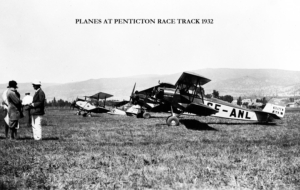 Hugh Cleland was a member of the organizing committee working with Reeve George MacDonald for the event. Hugh recalls an impressive list of visiting aircraft in spite of the poor weather on the coast. A formation flying team named the Three Musketeers of the Aero Club of B.C. was flown by pilots A.H. Wilson, Maurice McGregor, and Don Lawson.
Hugh Cleland was a member of the organizing committee working with Reeve George MacDonald for the event. Hugh recalls an impressive list of visiting aircraft in spite of the poor weather on the coast. A formation flying team named the Three Musketeers of the Aero Club of B.C. was flown by pilots A.H. Wilson, Maurice McGregor, and Don Lawson.
This group enjoyed the show at Penticton for more reasons than aviation. After a dinner and dance at the Aquatic Club, in the wee hours of the morning and after considerable liquid courage, the trio decided that they would go skinny-dipping in the lake. They were discovered and the group’s name was unofficially changed to “the Three Doukhobors.”
Two Gypsy Moths flown by L.L. Dunsmore of Vernon and Jack Wright of Vancouver and a 1932 Alexander D-2 Flyabout owned by J.E. Eve of Victoria were also present that day in July. In addition there was a Fairchild flown by J. Grubbstrom; an Aeronica C-3, owned by Frank Gilbert of Vancouver; a WACO owned by Ed Bennett; C.S. Peen’s Alexander Eaglerock; and from Chilliwack there was a Ryan B1 Brougham owned by Ginger Coote, and a 1929 model A-2 belonging to R.R. Brett. Pat Reid also arrived on July 8 in his company’s DH-80A Puss Moth CF-10L. Quite an impressive turnout.
Before they departed for Vernon, the pilots told local authorities that the airfield provided by Penticton was far too short for regular flying requirements. The city then abandoned any ideas of utilizing this area south of Queens Park as an aircraft landing area.
During the next two years, council purchased land south of the old Turf Club recreation grounds where Lt. Hall had first landed in June 1919. The Penticton Herald edition of March 21, 1935, reported council’s debate on a proposal by the golf club to lease the air strip property, stating that very few airplanes had used the field and the community would be better served by an extension of the golf club to absorb the airfield lands.
Penticton Reeve, Charlie Oliver, observed that he had been looking forward to a real airfield in the city. He lamented the fact that Penticton had been passed over by the Ottawa government’s development of an airway south of the city. Construction of an intermediate field at Oliver was taking place as part of the Unemployment Relief Scheme.
In 1936, the municipal council studied three new sites for an airfield. An airways inspector of the Civil Aviation Branch (DOD) in the company of the engineer working on the Oliver airfield, inspected the sites during 1937 and recommended development of a site on the Indian reserve, west of the Okanagan river and north of Skaha Lake.
The original route of Trans-Canada Airway had been via Princeton, Oliver, Grand Forks and then to Cranbrook. But after this section of airway came into regular use, the Grand Forks radio range station gave navigational problems which were in part solved by the construction of two new range stations, one at Crescent Valley and a second at Carmi.
The smaller community of Oliver, south of Penticton, had initially upstaged the larger city, but this changed with the rerouting of the airway, and Federal government assistance to build the Penticton airfield was forthcoming.
Latest from Okanagan
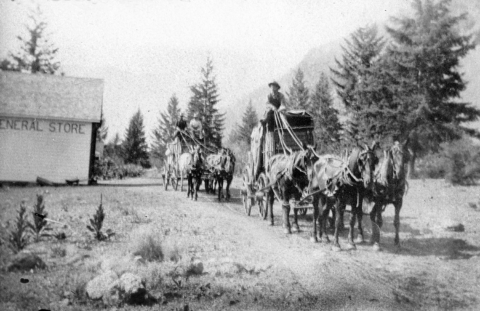
A FORGOTTEN GOLD RUSH – THE OLALLA MINES
James Riorden was a rancher from Olalla. He was also one of
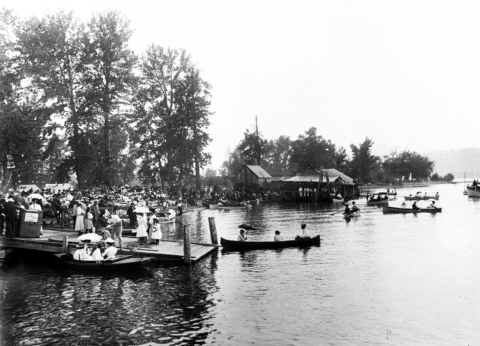
A RETROSPECTIVE ON KELOWNA CITY PARK
Editorial by Brian Wilson ©2014 Back in April 2014, long-time
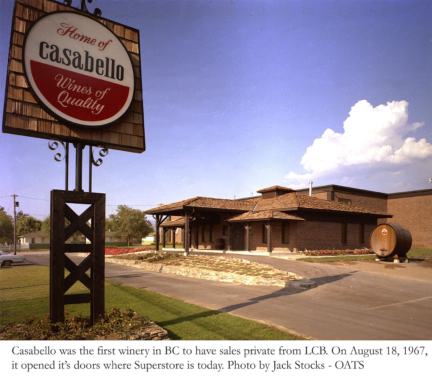
THE LOUGHEED LEGACY – THE STORY OF AL AND EVANS LOUGHEED
The Lougheed family were businessmen their whole lives. Sons Al and
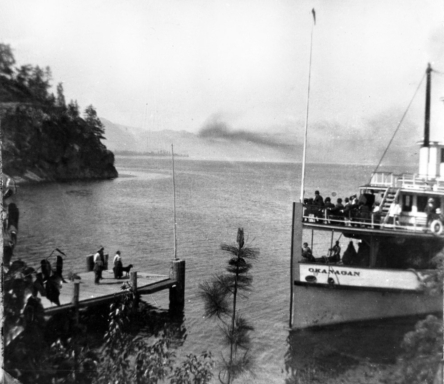
OLD KENNARD OF NAHUN LANDING
a letter from John Hamston, 1981 To give you a brief rundown

